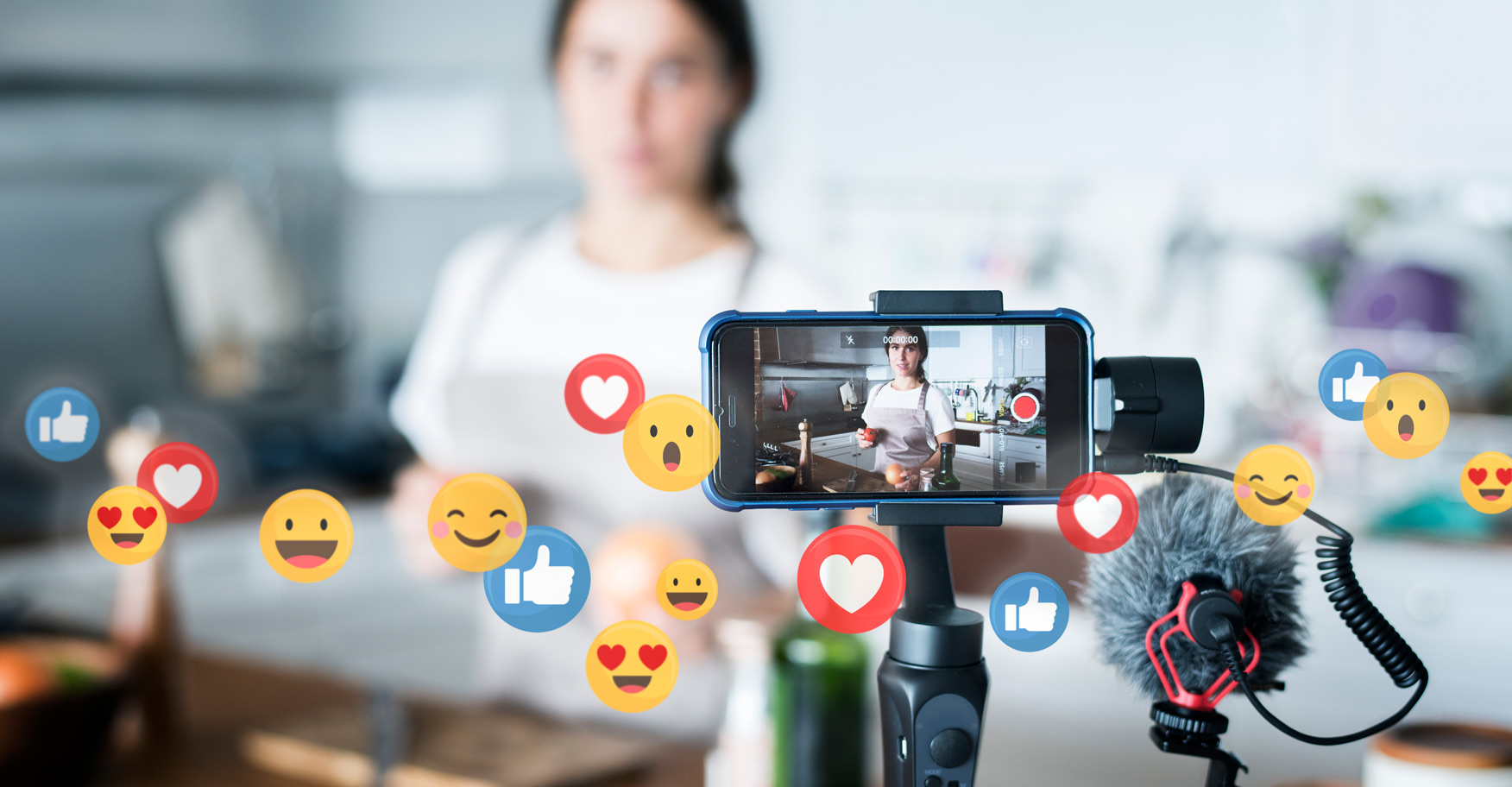In this multipart blog series, Midan team members are sharing how restaurants, retailers, distributors, producers and chefs have had to rethink foodservice — and what we believe the meat industry can do to match that creativity to find new ways of doing business.
Seven months into a pandemic that has rocked the foodservice industry to its core, more than 40,000 U.S. restaurants have permanently closed since March,1 leaving thousands of cooks, chefs and culinary experts wondering what’s next. Some have turned to the world of influencer marketing — leveraging their foodservice prowess to partner with brands and provide inspiration to consumers at home who are missing their favorite restaurant meals.
It’s no surprise that as consumers spend more time at home, they are also spending more time than ever consuming media. In 2020, the average time a U.S. consumer will spend with media per day is expected to be 13 hours and 35 minutes — with 47 minutes of that spent on online video and nearly an hour and a half spent on social media.2,3 This COVID-related increase has set the stage for influencers to thrive online.
According to social listening analysis conducted by Midan Marketing, social conversations around the world about cooking, cooking at home and cooking meat jumped more than 30% from July to September 2020 compared to the same time period last year. Where those conversations happened also changed: Last year, nearly half of the conversations about cooking took place on Twitter, with blogs a distant second. In 2020, these conversations were happening almost equally across YouTube (30%), Twitter (28.8%) and blogs (28.3%).4
“Looking at social media examples from March to May 2020, cooking conversations occurred mainly on YouTube,” explained Jordan Justice, Midan Marketing social media coordinator. “This suggests that during the early days of the pandemic, people craving socialization turned to videos, leading to an increase in ‘cook with me’ videos from influencers and YouTubers. There is an opportunity for restaurants and chefs to increase engagement and boost foodservice dollars by posting personable, engaging how-to recipe videos on their social channels.”
Cravings Abound for Restaurant Meals
This increase in cooking-based social conversations comes when consumers are desperately searching for dinner inspiration. According to a survey by IRI, 51% of consumers were cooking more than 90% of their meals at home in May. Nearly the same number said their biggest challenge was either coming up with new meal ideas or a lack of inspiration in the kitchen.5 Midan’s own research revealed that 41% of meat consumers are craving meat dishes that they aren’t able to cook at home.
“According to our August COVID-19 survey, 85% of consumers say their restaurant meals almost always or frequently include meat and/or poultry,6” said Michael Craddock, Midan Marketing content marketing associate. “When we look at Google trends data, there has been a 14.13% increase in searches for meat-centered recipes in 2020 versus the same period monitored in 2019. Based on this data we can assume that consumers are looking for ways to recreate their favorite restaurant meals at home.”
Several meat brands have already hopped on the influencer train. BUBBA burger® executed a #StayHomeGrillOut campaign this summer. Social gurus including @LoveNerdMaggie and @Sweetphi shared their dinner inspirations in June and July using BUBBA burger’s frozen burger patties. (We’ve got to say — @HungryByNatur’s Herbed Goat Cheese and Charred Corn Relish Angus Beef Burger had our mouths watering!)
Tyson Fresh Meats also uses influencers to promote their products — online and off. Making their debut earlier this year, the Tyson Barbecue Masters are a group of five pitmasters utilizing beef and pork from Tyson Fresh Meats in their cooking competitions and on their social media channels. @TuffyStone, @BigPoppaSmokers, @rio_valley_meat_bbq, @shakenbakebbq and @JustinMcGlaun are the pitmasters posting tantalizing photos and videos of their barbecue creations on social media as ads for Tyson Fresh Meats.
These influencer campaigns create a win-win-win situation for the cooks, the brands they represent and the consumers at home looking for dinner inspiration. By offering up content that home cooks are specifically searching for, brands will see greater engagement on their social channels. Influencers benefit because they can earn a living while sharing their culinary expertise with the world. While influencer campaigns were helped by the change in media consumption from COVID-19, they are likely to gather steam as the world becomes increasingly virtual. Creating and nurturing these influencer partnerships now can make it even easier to leverage them for success in the future.
1 Datassentials Trendspotting, Grand Opening During a Pandemic, Volume 81, October 2020
2 eMarketer, Time Spent with Media 2020, April 29, 2020
3 eMarketer, Social Networks See Boosts in Engagement Among Users, but Not Equally, May 19, 2020
4 Midan Marketing, Meltwater Social Listening, September 30, 2020
5 IRI, COVID-19 Weekly survey of primary shoppers, Wave 12, 5/29-5/31/2020
6 Midan Marketing, COVID-19 Survey Wave 6, August 2020
